Ultimate Guide: How to Grind Concrete with an Angle Grinder

Concrete grinding is an essential step in many construction and renovation projects. Whether you’re preparing a surface for a new finish or removing old coatings, grinding concrete with an angle grinder is a cost-effective and efficient way to achieve professional results.
Angle grinders are versatile tools that can be used for a variety of tasks, but when it comes to grinding concrete, there are a few key factors to consider. In this guide, we’ll take you through the step-by-step process of grinding concrete with an angle grinder, covering everything from preparation to finishing touches.
Firstly, you’ll need to gather the necessary materials and equipment, including a diamond cup wheel, safety gear, and a reliable angle grinder. We’ll walk you through the different types of diamond cup wheels and help you choose the right one for your specific project. We’ll also cover the importance of safety gear, such as goggles, gloves, and a dust mask, to protect yourself from potential hazards.
Next, we’ll dive into the preparation phase, which involves cleaning the concrete surface and removing any loose debris or coatings. This step is crucial for ensuring a smooth and even grind. We’ll show you how to properly clean the surface and identify any areas that may require additional preparation before starting the grinding process.
Finally, we’ll guide you through the actual grinding process, providing tips and techniques for achieving the desired results. We’ll cover the correct angle and pressure to apply, as well as how to effectively navigate corners and edges. We’ll also discuss the importance of regular maintenance and cleaning to prolong the life of your angle grinder and diamond cup wheel.
By the end of this ultimate guide, you’ll have the knowledge and confidence to tackle any concrete grinding project with ease. Whether you’re a DIY enthusiast or a professional contractor, grinding concrete with an angle grinder will become a valuable skill in your arsenal.
Preparing for Concrete Grinding
Gather the necessary tools and equipment
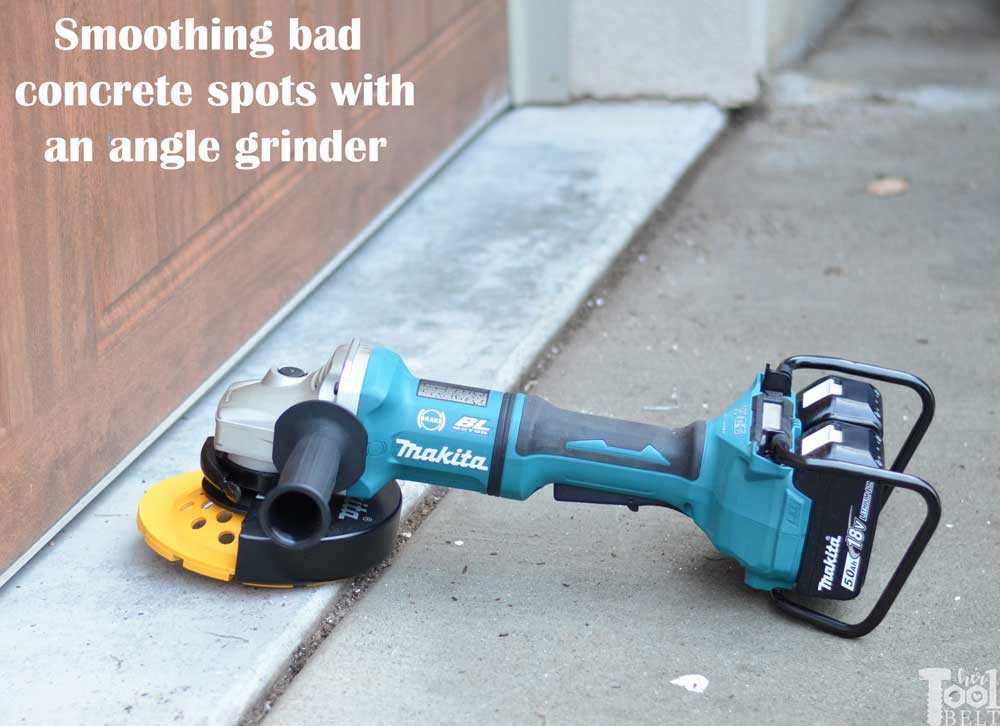
Before starting the concrete grinding process, it is important to gather all the necessary tools and equipment. Some of the essential tools you will need include an angle grinder with a diamond grinding wheel, safety goggles, ear protection, a respirator mask, and work gloves. Additionally, you may also need a dust shroud attachment for the angle grinder to minimize dust and debris.
Remove any obstacles
Prior to starting the concrete grinding, it is crucial to remove any obstacles or debris from the area to ensure a smooth and uninterrupted process. Clear the floor of any furniture, rugs, or loose items that may obstruct your work. This will not only help you move freely but also prevent any accidental damage to your belongings.
Clean the surface
Before you begin grinding, it is imperative to thoroughly clean the concrete surface. This ensures that there is no dirt, dust, or grease that could affect the grinding process. You can use a broom or a vacuum cleaner to remove any loose debris and then proceed with using a degreaser or a mild detergent to eliminate any stubborn stains or oil spots.
Protect adjacent surfaces
To prevent any damage to adjacent surfaces, it is recommended to protect them before you start grinding. Use plastic sheets or masking tape to cover walls, cabinets, or any other surfaces that are close to the area you will be working on. This will protect them from any accidental scratches or marks caused by the grinding process.
Ensure proper ventilation
Concrete grinding can produce a substantial amount of dust and debris. To maintain a safe and healthy working environment, it is important to ensure proper ventilation. Open windows and doors to allow fresh air to circulate, or use fans or an exhaust system to remove the dust particles from the area. Additionally, wearing a respirator mask will provide further protection against inhaling any harmful particles.
By following these preparation steps, you can create an ideal environment for concrete grinding and ensure a successful and efficient process.
Selecting the Right Angle Grinder
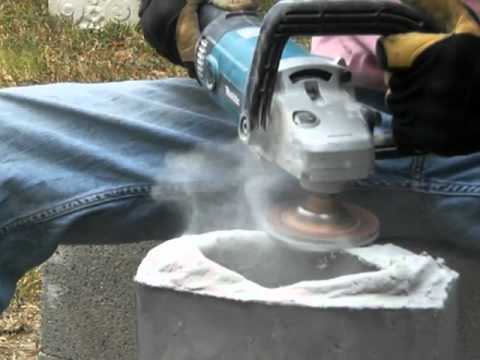
When it comes to grinding concrete, selecting the right angle grinder is crucial. There are several factors to consider, including the power source, disc size, and additional features.
Power Source
Angle grinders are available in two main power sources: corded and cordless. Corded angle grinders provide a constant power supply and are ideal for heavy-duty grinding tasks. On the other hand, cordless angle grinders offer more flexibility and portability, making them suitable for smaller projects or areas without access to electricity.
Disc Size
The disc size of an angle grinder determines the depth and speed of the grinding process. Larger disc sizes result in deeper cuts and faster material removal. However, they may be more challenging to control. Smaller disc sizes are suitable for lighter tasks and offer better maneuverability. The most common disc sizes for concrete grinding range from 4.5 to 9 inches.
Additional Features
Consider the additional features that an angle grinder may offer to enhance your concrete grinding experience. Some models come with adjustable handles for improved ergonomics and reduced fatigue. Others have dust collection systems to minimize dust and debris during the grinding process, improving visibility and air quality. Additionally, certain angle grinders have variable speed settings, allowing you to adjust the grinding speed according to the task at hand.
By carefully considering the power source, disc size, and additional features of an angle grinder, you can select the right tool for your concrete grinding needs. Remember to always follow safety guidelines and wear appropriate protective gear when operating an angle grinder.
Choosing the Appropriate Grinding Wheel
When it comes to grinding concrete with an angle grinder, choosing the appropriate grinding wheel is crucial. The right grinding wheel can make a significant difference in the quality of the grinding job and the overall efficiency of the process. Here are some factors to consider when selecting a grinding wheel for concrete grinding.
1. Material
The first thing to consider is the material of the grinding wheel. There are different types of grinding wheels available, including diamond, silicon carbide, and aluminum oxide. Diamond grinding wheels are known for their durability and efficiency in grinding concrete. Silicon carbide wheels are suitable for grinding softer materials, while aluminum oxide wheels are versatile and can be used for various applications. Consider the specific needs of your project before selecting the material of the grinding wheel.
2. Grit Size
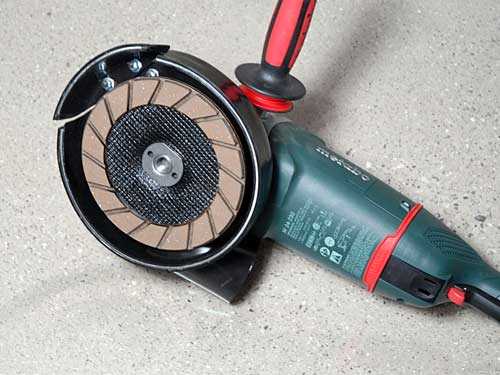
The grit size of the grinding wheel determines the coarseness or fineness of the finished surface. Coarse grits (lower numbers) are ideal for removing larger amounts of concrete quickly, while fine grits (higher numbers) are suitable for achieving a smoother finish. Determine the level of surface finish you desire and choose a grinding wheel with the appropriate grit size to achieve the desired result.
3. Wheel Shape
The shape of the grinding wheel can affect the efficiency and effectiveness of the grinding process. There are various wheel shapes available, including flat, cup, and beveled. Flat wheels are suitable for flat surfaces, while cup wheels are designed for grinding curved or concave surfaces. Beveled wheels, on the other hand, are ideal for chamfering edges. Consider the shape of the surface you will be grinding and choose a wheel shape that can effectively reach the desired areas.
4. Bond and Hardness
The bond of the grinding wheel refers to how well the abrasive grains are held together. Different bonds offer different levels of hardness and cutting ability. Harder bonds are suitable for grinding harder materials such as concrete, while softer bonds are better for grinding softer materials. Consider the hardness of the material you will be grinding and choose a grinding wheel with the appropriate bond and hardness.
Choosing the appropriate grinding wheel for concrete grinding is essential for achieving the desired results. Consider the material, grit size, wheel shape, and bond hardness when selecting a grinding wheel. By taking these factors into account, you can ensure that you have the right tool for the job and achieve a high-quality finish.
Safety Precautions for Grinding Concrete
Grinding concrete can be a hazardous task, so it is important to take adequate safety precautions to protect yourself and others. Here are some safety measures to consider before and during the grinding process:
1. Wear Personal Protective Equipment (PPE)
Before starting any concrete grinding work, make sure to wear the appropriate personal protective equipment. This includes safety goggles, a dust mask, ear protection, and sturdy work gloves. PPE will help minimize the risk of eye injuries, respiratory problems, and hearing damage.
2. Prepare the Work Area
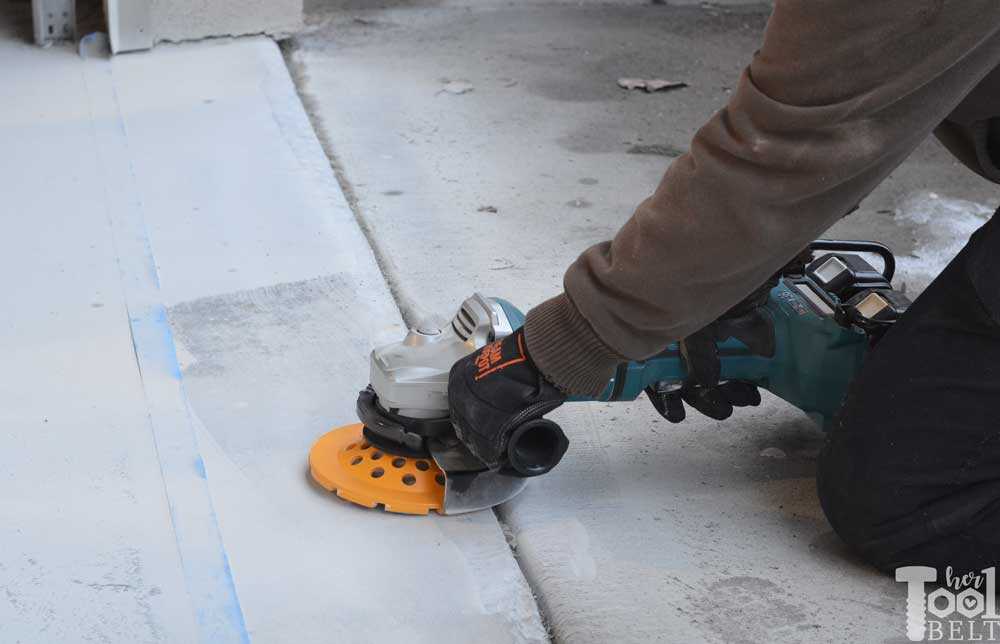
Prior to grinding concrete, it is essential to prepare the work area to ensure a safe and efficient process. Clear the area of any obstacles or clutter that could cause accidents or trip hazards. Make sure there is sufficient lighting and ventilation in the work area.
3. Secure the Workpiece
When grinding concrete, it is important to secure the workpiece firmly. Use clamps or other appropriate fixtures to hold the concrete in place. This will help to prevent the piece from shifting or moving during the grinding process, reducing the risk of accidents.
4. Inspect the Grinder
Before using the angle grinder for concrete grinding, inspect it thoroughly. Check for any damage or defects that could potentially cause the grinder to malfunction. Ensure that the grinding wheel is properly mounted and secured before operating the tool.
5. Avoid Excessive Pressure
While grinding concrete, it is important to use the right amount of pressure. Applying excessive force can lead to overheating of the grinder or the grinding wheel, increasing the risk of accidents. Maintain a steady and controlled pressure throughout the grinding process.
6. Use Proper Grinding Techniques
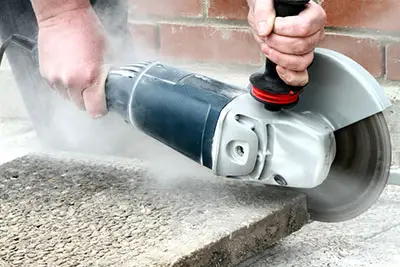
To ensure safety and achieve the best results, it is essential to use proper grinding techniques. Avoid grinding at extreme angles or in a jerky motion, as this can result in loss of control and potential injuries. Use smooth and even strokes, following the grain of the concrete.
7. Keep a Clean Work Area
During and after grinding concrete, it is important to keep the work area clean and free of dust and debris. Use a vacuum or dust extraction system to remove concrete dust and particles. Keeping a clean work area will help prevent slips, falls, and respiratory problems.
By following these safety precautions, you can ensure a safe and successful concrete grinding process. Remember to always prioritize safety and take the necessary steps to protect yourself and others while working with an angle grinder.
Setting Up the Grinding Area
Clear the space
Before you begin grinding concrete with an angle grinder, it is important to clear the area where you will be working. Remove any furniture, decorations, or equipment that may obstruct your movement or hinder the grinding process. This will create a safe and spacious environment for you to work in.
Protect the surrounding surfaces
Grinding concrete can create a lot of dust and debris, so it is essential to protect the surrounding surfaces. Cover nearby walls, furniture, and other objects with plastic sheets or drop cloths. This will prevent any dust or fragments from damaging or staining these surfaces during the grinding process.
Set up a ventilation system
Grinding concrete can release harmful dust particles into the air, which can be hazardous to your health. To ensure a safe working environment, set up a ventilation system to filter out the dust. Use fans to circulate the air and consider using a dust extraction system or wearing a respirator mask to protect yourself.
Prepare the grinder
Before you start grinding, make sure your angle grinder is in good working condition. Inspect the grinding disc to ensure it is not damaged or worn out. Attach a vacuum attachment or dust shroud to the grinder to collect the dust. Additionally, make sure you have a water source nearby to wet the concrete and minimize dust production.
Mark the grinding area
To ensure an even and consistent grind, mark the area of concrete that you will be working on. Use chalk or a marker to outline the section that needs to be ground. This will help you stay within the designated area and prevent unnecessary grinding of surrounding surfaces.
Starting the Concrete Grinding Process
Prepare the work area
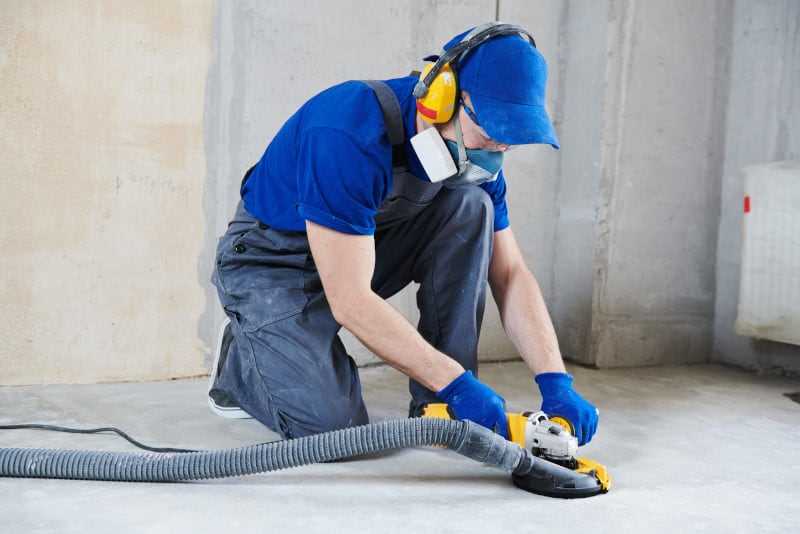
Before you begin grinding the concrete, it’s important to prepare the work area to ensure safety and efficiency. Clear the area of any furniture, debris, or obstacles that might get in the way. This will create a clean and spacious work space, allowing you to move around freely with your angle grinder.
Wear protective gear
Grinding concrete can create a lot of dust and debris, so it’s crucial to protect yourself by wearing proper safety gear. Put on safety glasses or goggles to protect your eyes from flying particles. Wear a dust mask to avoid inhaling the dust. Additionally, it’s recommended to wear ear protection to reduce the noise level from the grinding process.
Inspect the angle grinder
Before starting the concrete grinding process, take a few moments to inspect your angle grinder. Check the power cord for any damages or fraying. Ensure that the grinding disc is securely attached and in good condition. If any issues are found, address them before proceeding to avoid accidents or equipment malfunctions.
Choose the right grinding disc
Selecting the appropriate grinding disc for the concrete surface is essential for achieving the desired results. There are various types of grinding discs available, each designed for different applications. For concrete grinding, choose a diamond grinding disc specifically designed for this purpose. Diamond discs provide excellent cutting and grinding performance on concrete surfaces.
Start grinding gradually
Once you have prepared the work area, put on your protective gear, and inspected the angle grinder, you can begin the concrete grinding process. Start by grinding the concrete surface gradually, moving the angle grinder in a back and forth motion. Apply steady and even pressure to ensure an even grinding result. Take breaks periodically to allow the grinder and disc to cool down.
Clean up the dust and debris
As you grind the concrete, a significant amount of dust and debris will be produced. It’s crucial to constantly clean up the dust during the grinding process to maintain visibility and prevent it from settling back onto the surface. Use a vacuum or a wet/dry shop vac to remove the dust and debris as you work. This will keep the work area clean and reduce the risk of slipping or accidents.
Inspect the progress
Regularly inspect the progress of the concrete grinding to ensure that you are achieving the desired results. Check for any uneven areas or spots that might require additional grinding. Take your time and be thorough in your assessment to achieve a smooth and even concrete surface.
Following these steps will help you effectively start the concrete grinding process with an angle grinder. Remember to prioritize safety at all times and take necessary precautions to protect yourself and others in the work area.
Techniques for Grinding Concrete
Grinding concrete is a common task when it comes to preparing surfaces for various types of flooring or for polishing. There are several techniques that can be used to achieve a smooth and even surface, depending on the desired outcome.
1. Dry Grinding
Dry grinding is the most common method used for grinding concrete. It involves using an angle grinder with a diamond grinding cup wheel to grind the surface without any water or lubricant. This technique is suitable for smaller areas and is often used to remove coatings or pre-existing concrete imperfections.
2. Wet Grinding
Wet grinding is another technique that can be used to grind concrete. This method involves using water and a grinding wheel with a diamond-segmented rim. The water helps to keep the diamond segments cool and lubricated, preventing overheating and extending the life of the grinding wheel. Wet grinding is often used for larger areas and is more effective in producing a smoother finish.
3. Grinding with Multiple Passes
When grinding concrete, it is often necessary to make multiple passes to achieve the desired result. This technique involves gradually lowering the grinding wheel and increasing the pressure with each pass. Each pass removes a small amount of material, allowing for more control and precision in achieving the desired surface finish.
4. Edge Grinding
Edge grinding is a technique used to grind the edges or corners of a concrete surface that cannot be reached with a larger grinding machine. It involves using a smaller grinder or a hand-held grinding tool to carefully grind and shape the edges, ensuring a seamless transition between surfaces.
5. Polishing
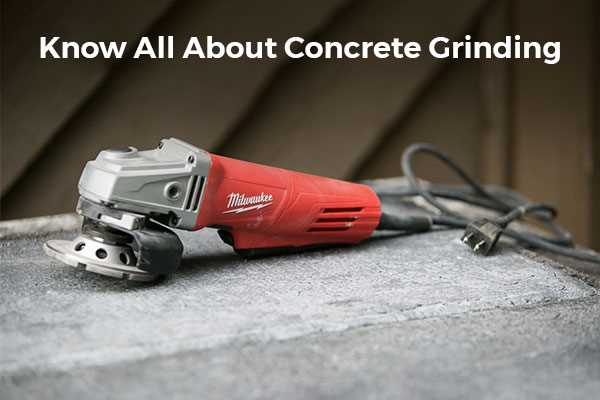
Polishing is the final step in the concrete grinding process and is used to achieve a glossy and smooth surface. This technique involves using progressively finer grits of diamond polishing pads to remove any remaining imperfections and to bring out the natural shine of the concrete surface. Polishing can be done using either a wet or dry method, depending on the desired outcome.
Overall, the choice of grinding technique will depend on the specific requirements of the project and the desired surface finish. It is important to select the appropriate grinding method and equipment to ensure the best results and to minimize any potential damage to the concrete surface.
Finishing and Cleaning Up After Grinding
Finishing Off the Surface
Once you have completed the grinding process, it is important to finish off the surface to achieve the desired smoothness and appearance. One method of finishing is to use a power sander with fine-grit sandpaper. This will help to remove any rough areas or imperfections left behind by the grinding process. Alternatively, you can apply a concrete overlay or sealer to give the surface a polished and glossy finish.
Cleaning Up the Dust
Grinding concrete can create a lot of dust, so it is crucial to properly clean up after the job is done. Start by using a broom or brush to sweep up any loose dust and debris. Next, use a shop vacuum to remove the remaining dust from the floor and surrounding area. Be thorough in your cleaning to ensure that no dust particles are left behind, as they can affect the finish of the concrete surface.
Protecting the Surrounding Area
During the grinding process, it is important to protect the surrounding area from dust and debris. Use plastic sheeting or tarps to cover any nearby furniture, walls, or objects that could potentially be damaged. Additionally, consider using a dust shroud or a vacuum attachment on your angle grinder to minimize the spread of dust. Taking these precautions will help to keep your work area clean and prevent any unwanted damage.
Disposing of Waste Materials
Proper disposal of the waste materials generated from grinding concrete is essential. Bag up the concrete dust and debris in heavy-duty plastic bags and seal them tightly. Check with your local waste management facility or recycling center for guidelines on disposing of concrete waste. It is important to follow proper disposal procedures to ensure environmental compliance and safety.
FAQ:
Why would I want to grind concrete with an angle grinder?
Grinding concrete with an angle grinder is a common practice for many reasons. It can help remove imperfections and smooth out the surface of the concrete, making it more aesthetically pleasing. It can also help prepare the concrete for coatings or overlays, as well as level uneven surfaces.
What type of angle grinder should I use for grinding concrete?
When grinding concrete, it’s recommended to use a grinder with a diamond cup wheel or a grinding disc specifically designed for concrete. These tools are more effective in grinding through the hard surface of concrete.
What safety precautions should I take when grinding concrete with an angle grinder?
When grinding concrete with an angle grinder, it’s important to wear safety goggles to protect your eyes from flying debris. It’s also recommended to wear a dust mask to avoid inhaling the dust. Additionally, make sure to keep a firm grip on the grinder and always be aware of your surroundings.
How do I choose the right diamond cup wheel for grinding concrete?
When choosing a diamond cup wheel for grinding concrete, you should consider the hardness of the concrete and the desired level of grinding. Harder concrete may require a coarser grit, while softer concrete may require a finer grit. It’s also important to choose a cup wheel that is compatible with your angle grinder.
Do I need to wet grind the concrete?
Wet grinding concrete can help reduce dust and keep the diamond cup wheel cool, resulting in a smoother and more effective grinding. However, it’s not always necessary to wet grind the concrete. It depends on the specific project and personal preference.
How do I grind the edges of a concrete slab with an angle grinder?
To grind the edges of a concrete slab with an angle grinder, you can use a diamond cup wheel or a grinding disc. Start by holding the angle grinder at a slight angle and grinding along the edge in a smooth motion. Be sure to keep the grinder moving to avoid creating any irregularities.
Can I use an angle grinder to remove paint or epoxy from concrete?
Yes, an angle grinder can be used to remove paint or epoxy from concrete. You will need to attach a stripping or grinding disc to the grinder and carefully work the surface to remove the paint or epoxy. However, it’s important to wear the necessary safety gear and take precautions to prevent any damage to the concrete.
Video:







